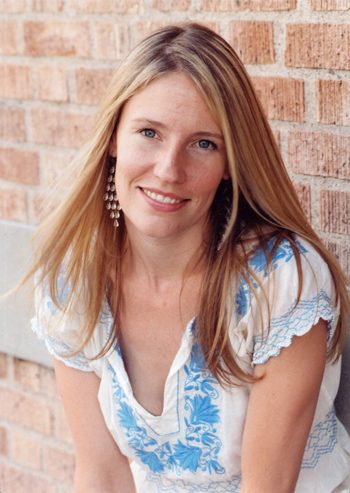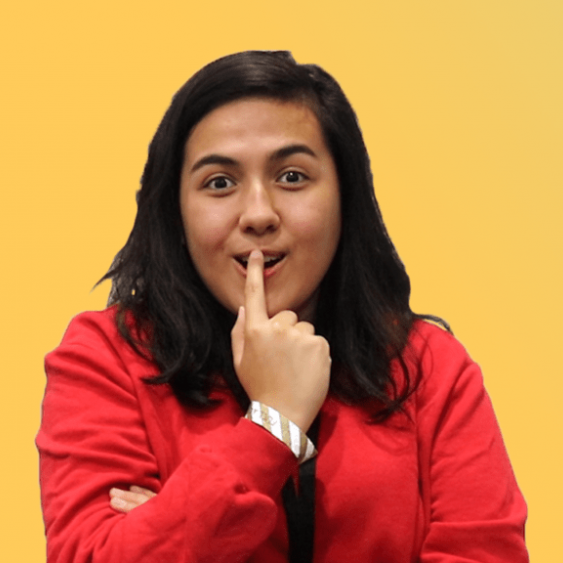
The co-author of Manifesta just won’t pick a team and she shouldn’t have to.
“We’re all straight here, right?” asked an early-20s Jennifer Baumgardner, then a straight-identified staffer at Ms. magazine, to a table full of new interns. When hip, sexy and femmey Anastasia replied, “pretty much” in contrast to her colleagues’ yeses, Baumgardner found her preconceptions of female sexuality, especially her own, forever changed. “I was exposed in what could have been called my heterosexism,” she writes in Look Both Ways: Bisexual Politics, “But that’s not what prompted the blood to rush to my cheeks—I was looking at the beautiful Anastasia with new eyes.”
Baumgardner leads us through the next 15 years of her love life, from Anastasia (who became her first girlfriend) to Indigo Girl Amy Ray, and the male partners in between and after. Weaving personal stories, sociocultural commentary and interviews with the most famous feminists and “fence-sitters” of the third wave, Baumgardner explores the potential freedom and fulfilment of bisexual identity, while examining the exclusion and misunderstanding bisexuals often face from both the straight and lesbian worlds.
What was your intention in writing Look Both Ways?
Well, I guess my own biography prompted me to write the book. But, falling for a woman was also sort of a big shift. Not internally—I mean, I loved women as friends and comrades and was not too homophobic—but in terms of how I thought I would be perceived. I felt like there was no bridge between the Jennifer that already existed—in Fargo [North Dakota] and elsewhere—and Jennifer who fell in love with Anastasia and later Amy. The book was a way to build that bridge rhetorically.
I think this relates to politics and human rights in that I’m trying to erase some of the false differences between being gay or straight. Many of us, particularly perhaps women—see the new book Sexual Fluidity by Lisa Diamond—have the potential to love women or men. It’s not bizarre, or a reaction to trauma or some other thing that one can use to distance oneself from that potential. Through empathy and facing fear, I think human rights are achieved through empathy. I also felt like there were lots of girls with stories like mine—but they were written off as phases or invalid. I wanted to honour those stories and give the relationships I have had their due.
Have you and Anastasia been consistently in contact since your Ms. days?
After we broke up in 1996, we weren’t really in touch for a couple of years—at first because it was too hard on me to see her with her new girlfriend and later because I was sort of angry and didn’t want to be friends with her. By the time I got pregnant in 2004, she was one of my four closest friends and she had her son four months after I had mine, so now we see each other constantly. She was a big reader of Look Both Ways during the drafting process, beginning in 2001, when I first began working on it.
How do you feel about the use of the word “queer?” Do you think it’s important for bi women to be out and proud as “bi” rather than using a more ambiguous term?
I don’t care if anyone uses the term bi to describe themselves, really, though I guess I do advocate for people to be honest about where their love lives have taken them. As for queer, I have never really felt like that described me—possibly because I’m older. It’s not like finding the term “queer” to be combative and polarizing, it’s just that I never used it to describe myself or my community.
Is it important for the LGBT community or LGBT events to call themselves “LGBT” rather than “gay and lesbian,” or just “gay”? Or do you think terminology’s not such a big deal?
I am not a big stickler on terminology, but I use LGBT when speaking of the queer community as a whole and identify people the way they have [identified] themselves to me when speaking of individuals. Thus, Ani DiFranco is bi, T Cooper is trans, and Ariel Levy is a lesbian.
You dedicate a whole chapter to Ani DiFranco. Why do you think that she gets away with just being herself, where other bisexuals—both famous ones, and more so, “regular girls”—have such a hard time?
Well, she has gotten shit in the past, too, for being queer-identified but married to a man back in the day, and partnered with another man today. Still, I think she is in many ways so independent and outsider-identified in terms of her aesthetic—tattoos, crazy hair, combat boots—and her business model—completely self-directed and owns her art—that she represents the ideal of a woman who doesn’t need to rely on men. In that, she is relatable to lesbians and appealing to feminists of all persuasions. I think other bi women are applauded, too, such as Angelina Jolie and Meshell Ndegeocello, in part because they share that independent, fierce, totally sexy quality that Ani has.
Have you met many bisexual women who are butch identified? Do you think butch and femme bi women face unique challenges in being accepted by the mainstream?
I have met many women who are butch in vibe [or] appearance who are at my readings, but I don’t know if they would identify as bi. I don’t ask people’s sexual identity at readings, though sometimes they simply share it.
I think bi women who are femme are more familiar to the mainstream heterosexual world, and thus perhaps more acceptable. Butch bi women with a man are presumed to be really gay, I suppose, and when with a woman, presumed to be full-on lesbians. I think their challenges are the same, though—to have the right to self-identify, rather than be told who they are based on stereotypical assumptions.


